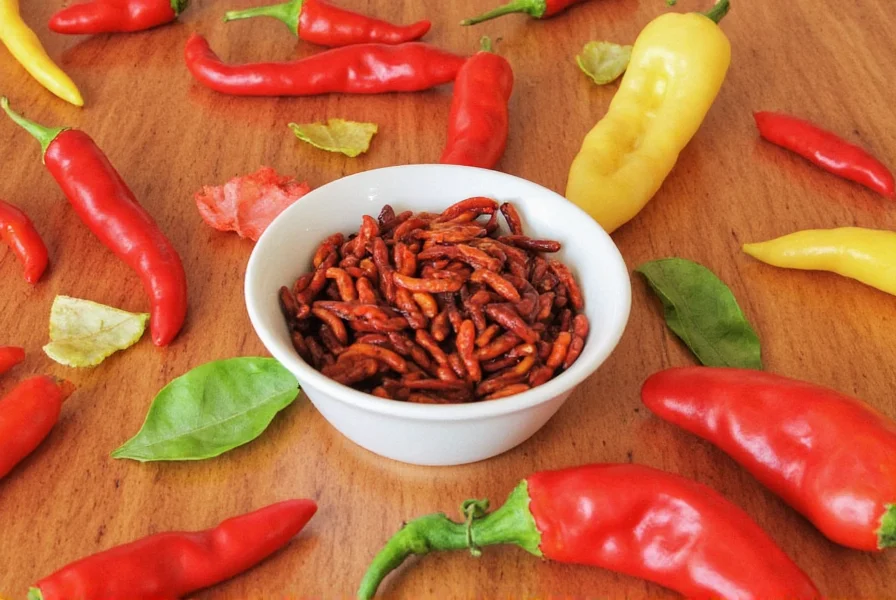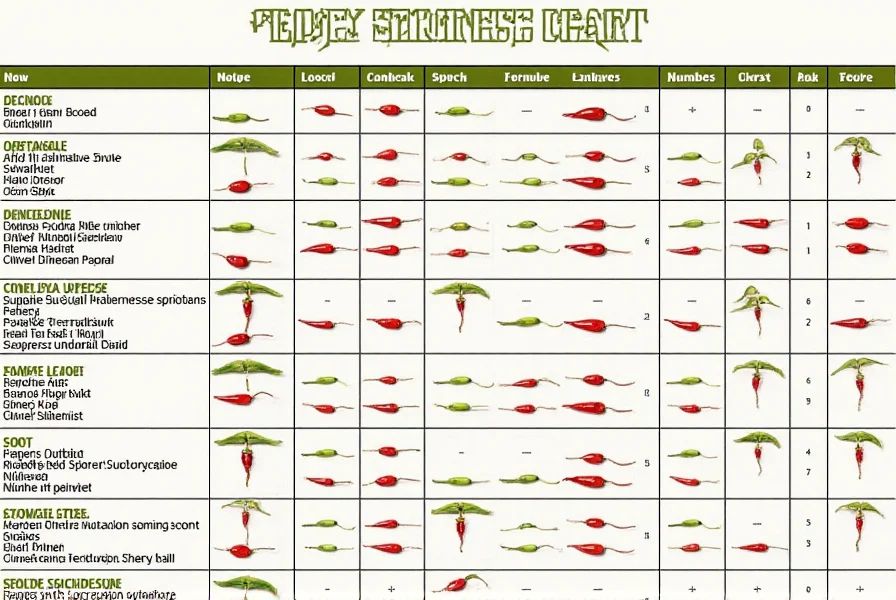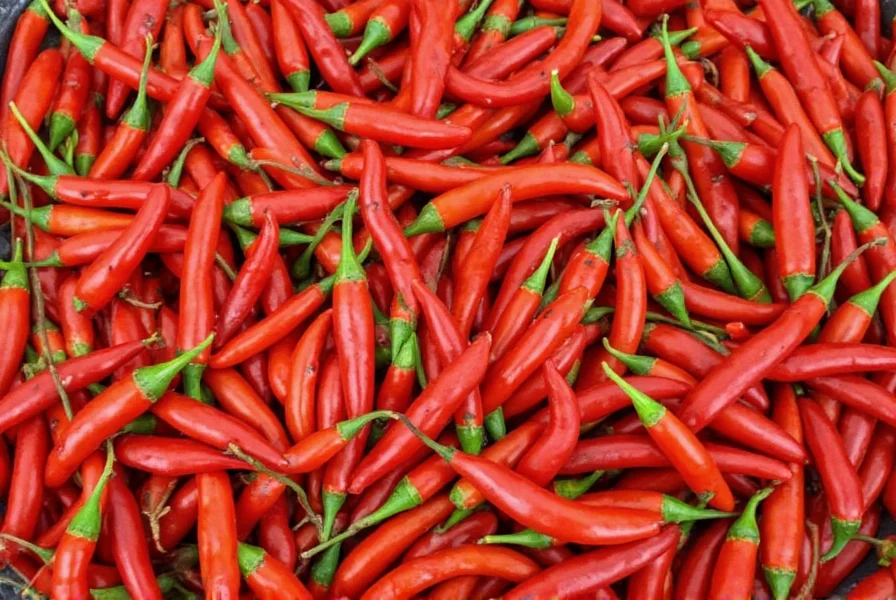What Makes Chilis Spicy? The Science of Capsaicin
Capsaicin is the natural compound responsible for the heat in chilis. Found primarily in the white membranes and seeds of chili peppers, capsaicin triggers heat receptors in your mouth, creating that signature burning sensation. The concentration of capsaicin determines the chili's spiciness level, measured in Scoville Heat Units (SHU).
While heat is the most famous aspect, chilis also offer diverse flavors—from sweet and fruity to smoky and earthy. Understanding what makes a chili spicy and flavorful can help you choose the right pepper for any dish.

Understanding Chili Heat Levels: The Scoville Scale
Chili peppers vary dramatically in heat intensity. Here's a breakdown of common varieties and their heat levels:
| Chili Type | Scoville Heat Units (SHU) | Heat Level |
|---|---|---|
| Jalapeño | 2,500–8,000 | Mild |
| Serrano | 10,000–25,000 | Moderate |
| Habanero | 100,000–350,000 | Hot |
| Ghost Pepper | 1,000,000+ | Extremely Hot |
| Carolina Reaper | 1,500,000+ | Unbelievably Hot |
This table provides a general reference for chili heat levels. Note that actual heat can vary based on growing conditions and ripeness.

Chili Variety: From Mild to Wild
Chilis aren't just about heat—they also offer a wide range of flavors and textures. Here are some popular types and their characteristics:
- Jalapeño: A staple in Mexican cuisine, jalapeños are crisp, slightly spicy, and great for roasting, pickling, or adding to salsas.
- Serrano: Slightly hotter than jalapeños, serranos are often used in salsas and guacamole. Their thicker skin makes them ideal for grilling.
- Chipotle: These are smoked and dried jalapeños. They add a deep, smoky flavor to dishes like tacos and stews.
- Habanero: Known for their bright orange color and intense heat, habaneros are perfect for hot sauces and Caribbean-inspired dishes.
- Poblano: Milder and heartier, poblanos are often stuffed or used in mole sauces.
- Cayenne: A common chili used in powders and hot sauces, cayenne adds both heat and a subtle tang.
Each chili has its own unique profile, so experimenting with different varieties can be a fun and flavorful journey.

Practical Tips for Handling Chilis Safely
Handling chilis can be a bit tricky, especially if you're not used to the heat. Here are some tips to keep you safe and comfortable:
- Wear gloves: Capsaicin can cause irritation on the skin, so always wear gloves when handling raw chilis.
- Wash your hands thoroughly: Even after wearing gloves, wash your hands with soap and water to avoid transferring capsaicin to your face or eyes.
- Avoid touching your face: Capsaicin can cause a burning sensation if it comes into contact with your eyes or mouth.
- Use a knife and cutting board: Avoid using your fingers to cut chilis, as this increases the risk of capsaicin transfer.
- Keep milk or yogurt nearby: If you accidentally touch your eyes or lips, drinking milk or applying yogurt can help neutralize the heat.
By following these simple steps, you can enjoy the heat without the discomfort.

Buying Guide: How to Choose the Right Chili for Your Needs
Whether you're shopping for a recipe or just experimenting in the kitchen, choosing the right chili depends on your personal preferences and the dish you're making. Here's a guide to help you find the perfect chili:
Best for Beginners: Jalapeño
Features: Mild heat, versatile use, available year-round.
Advantages: Great for beginners, easy to find, pairs well with many ingredients.
Use Cases: Salsa, tacos, sandwiches, and pickling.
Target Audience: Home cooks who want to start exploring spicy foods.
Suitable Occasions: Weeknight dinners, backyard barbecues, or casual gatherings.
For Flavor Enthusiasts: Habanero
Features: High heat, tropical fruit flavor, vibrant color.
Advantages: Adds depth and complexity to sauces and marinades.
Use Cases: Hot sauces, Caribbean dishes, and tropical cocktails.
Target Audience: Experienced cooks looking to explore bold flavors.
Suitable Occasions: Special events, themed dinners, or adventurous cooking nights.
For Heat Lovers: Ghost Pepper
Features: Extremely hot, small size, intense flavor.
Advantages: Perfect for those who crave extreme heat.
Use Cases: Spicy snacks, hot sauces, and novelty recipes.
Target Audience: Spice enthusiasts and challenge seekers.
Suitable Occasions: Competitive eating events, spicy food festivals, or daredevil cooking.
For Versatile Cooking: Serrano
Features: Moderate heat, firm texture, great for grilling.
Advantages: Offers a balance between heat and flavor.
Use Cases: Salsas, grilled dishes, and soups.
Target Audience: Cooks who want a middle-ground option.
Suitable Occasions: Everyday meals, family dinners, or casual brunches.
Remember, what makes a chili is not just about the heat—it's about how it enhances your cooking experience and brings out the best in your dishes.

Frequently Asked Questions
What compound makes chilis spicy?
Capsaicin is the natural compound responsible for the heat in chilis. It's concentrated in the white membranes and seeds of the pepper. When consumed, capsaicin triggers heat receptors in your mouth, creating that signature burning sensation. The amount of capsaicin directly correlates with a chili's spiciness level.
How is chili heat measured scientifically?
Chili heat is measured using the Scoville Heat Unit (SHU) scale, which determines capsaicin concentration. Originally based on human taste testing, modern measurements use high-performance liquid chromatography (HPLC) for accuracy. For example, bell peppers register 0 SHU while Carolina Reapers can exceed 1.5 million SHU.
Can you reduce the heat of a chili in cooking?
Yes, several methods can reduce chili heat: removing seeds and white membranes (where most capsaicin resides), cooking with dairy products like yogurt or cheese, adding acidic ingredients like lime juice, or incorporating sweet elements such as honey. Soaking chilis in milk before use also helps neutralize capsaicin.
Why do chilis have different flavors beyond just heat?
Beyond capsaicin, chilis contain various volatile compounds that create distinct flavor profiles. Factors like growing conditions, ripeness, and variety affect notes of fruitiness (habaneros), smokiness (chipotles), or earthiness (poblanos). These flavors develop from terpenes, esters, and other organic compounds unique to each pepper type.
Are hotter chilis always more flavorful?
Not necessarily. While extremely hot chilis like Ghost Peppers deliver intense heat, milder varieties often showcase more complex flavor notes. Poblanos offer rich earthiness, Anaheim peppers provide subtle sweetness, and jalapeños contribute grassy freshness. Many chefs prefer moderately hot chilis for balanced flavor development in dishes.
Conclusion
Understanding what makes chilis spicy is essential for anyone who wants to get the most out of their spice adventures. From the chemistry behind the heat to the diversity of flavors, chilis offer something for everyone. Whether you're a novice or a pro, learning about chilis can open up new worlds of taste and creativity in the kitchen.
So next time you reach for a chili, take a moment to think about what makes it special. You might just discover a new favorite ingredient or even a new way of cooking.












 浙公网安备
33010002000092号
浙公网安备
33010002000092号 浙B2-20120091-4
浙B2-20120091-4